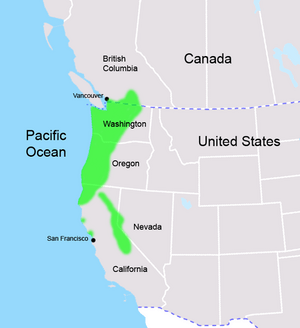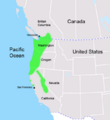Mountain beaver flea facts for kids
Quick facts for kids Mountain beaver flea |
|
|---|---|
| Scientific classification | |
| Kingdom: | |
| Phylum: | |
| Class: | |
| Order: | |
| Family: |
Hystrichopsyllidae
|
| Genus: |
Hystrichopsylla
|
| Species: |
H. schefferi
|
| Binomial name | |
| Hystrichopsylla schefferi Chapin 1919
|
|
 |
|
| Distribution of host species | |
| Synonyms | |
|
Hystrichopsylla hubbardi Augustson 1953 |
|
The Hystrichopsylla schefferi, often called the mountain beaver flea or giant mountain beaver flea, is a special kind of insect. It's a parasite, which means it lives on or in another animal and gets its food from that animal. This flea belongs to an insect group called Siphonaptera, which means "siphon-wingless" – a perfect name for fleas that drink blood and don't have wings!
This amazing flea is the largest living flea in the world. It can grow up to about 0.5 inches (13 mm) long! You can find it in the American Northwest. While many fleas in its family, Hystrichopsylla, don't stick to just one animal, the mountain beaver flea is different. It mostly lives on the mountain beaver. This means wherever you find mountain beavers, you're likely to find this flea too.
What Makes This Flea Special?
The mountain beaver flea is part of a very old group of fleas called Hystrichopsyllidae. These fleas, along with another family called Pulicidae, are some of the oldest fleas known in Earth's history. This means they have been around for a very long time!
How to Tell Fleas Apart
It can be tricky to tell different flea species apart, especially if they look very similar. The mountain beaver flea, H. schefferi, looks a lot like a close relative called Hystrichopsylla gigas dippiei. But there's a cool way to tell them apart: by counting the spines on their "pronotal comb." This is a row of stiff bristles found on the flea's neck area. The mountain beaver flea has about 46 spines, while H. g. dippiei has 36.
Images for kids


